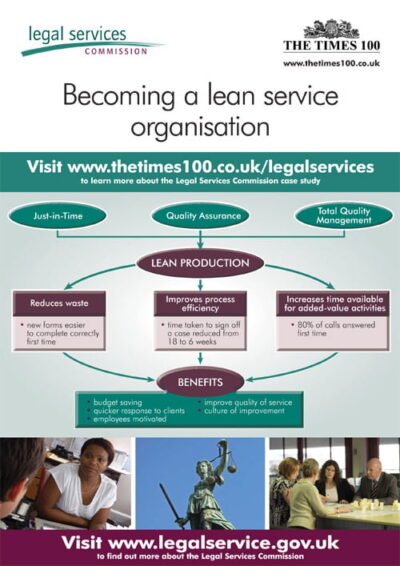The Last In, First Out (LIFO) method is a significant inventory valuation technique that has garnered attention in both accounting and financial management circles. This approach operates on the principle that the most recently acquired inventory items are the first to be sold or used. As a result, LIFO can have profound implications for a company’s financial reporting, tax obligations, and overall inventory management strategy.
The method is particularly relevant in times of inflation, where the cost of goods sold can be significantly impacted by rising prices. Understanding LIFO is essential for businesses aiming to optimise their financial performance and comply with regulatory standards. In the context of inventory management, LIFO stands in contrast to other methods such as First In, First Out (FIFO) and Weighted Average Cost.
Each of these methods has its own set of advantages and disadvantages, making it crucial for businesses to carefully consider which approach aligns best with their operational needs and financial goals. The choice of inventory valuation method can influence not only the reported profitability of a company but also its tax liabilities and cash flow management. As such, a comprehensive understanding of LIFO is vital for stakeholders involved in financial decision-making.
Summary
- LIFO is an inventory valuation method where the last items added to inventory are the first to be expensed or sold.
- LIFO assumes that the most recent inventory items are sold first, which may not reflect the actual flow of goods in a business.
- Advantages of using LIFO include tax benefits during inflation and better matching of current costs with current revenues, while disadvantages include higher administrative costs and potential distortion of financial statements.
- LIFO is often compared with FIFO (First In, First Out) and weighted average cost methods, with each method having its own advantages and disadvantages.
- The use of LIFO can impact financial statements by affecting the cost of goods sold, inventory valuation, and net income, which can in turn influence investor and creditor decisions.
Understanding the concept of LIFO
At its core, the LIFO method assumes that the latest inventory items purchased are the first to be sold. This means that when a company sells its products, it accounts for the cost of the most recently acquired items first, leaving older inventory on the balance sheet. This approach can lead to a lower taxable income during periods of inflation since the cost of goods sold reflects higher recent prices, while older, cheaper inventory remains on the books.
Consequently, LIFO can provide a strategic advantage in managing tax liabilities, particularly for companies operating in industries where prices are volatile. To illustrate this concept further, consider a hypothetical company that sells electronic gadgets. If the company purchases 100 units of a gadget at £50 each and later acquires another 100 units at £70 each, under LIFO, when it sells 150 units, it would first account for the cost of the 100 units purchased at £70 and then 50 units from the earlier batch at £50.
This results in a higher cost of goods sold compared to FIFO, where the older inventory would be accounted for first. The implications of this choice extend beyond mere accounting; they can affect cash flow, investment decisions, and even stockholder perceptions.
Advantages and disadvantages of using LIFO
The LIFO method presents several advantages that can be appealing to businesses, particularly in inflationary environments. One of the primary benefits is its potential to reduce taxable income. By recognising higher costs associated with recent purchases first, companies can lower their reported profits, thereby decreasing their tax liabilities.
This can free up cash that can be reinvested into the business or used for other operational needs. Additionally, LIFO can provide a more accurate reflection of current market conditions in terms of inventory valuation, as it aligns the cost of goods sold with current prices. However, despite these advantages, there are notable disadvantages associated with LIFO that companies must consider.
One significant drawback is that it can lead to outdated inventory valuations on the balance sheet. Since older inventory remains recorded at lower costs, this can distort a company’s financial position and mislead stakeholders regarding its actual asset value. Furthermore, LIFO is not permitted under International Financial Reporting Standards (IFRS), which limits its applicability for companies operating globally or those seeking to attract international investors.
This restriction can create complications for businesses that wish to maintain consistency in their financial reporting across different jurisdictions.
Comparison of LIFO with other inventory valuation methods
When comparing LIFO with other inventory valuation methods such as FIFO and Weighted Average Cost, it becomes evident that each approach has unique implications for financial reporting and operational strategy. FIFO operates on the premise that the oldest inventory items are sold first, which often results in lower cost of goods sold during inflationary periods. This can lead to higher reported profits and increased tax liabilities compared to LIFO.
For instance, if a company using FIFO experiences rising costs, its older inventory will be sold at lower prices, resulting in a more favourable profit margin but potentially higher taxes. On the other hand, the Weighted Average Cost method calculates an average cost for all inventory items available for sale during a period. This approach smooths out price fluctuations over time and provides a middle ground between FIFO and LIFO.
While it may not offer the same tax advantages as LIFO during inflationary periods, it does provide a more stable view of inventory costs and can be easier to manage from an operational perspective. Each method’s suitability ultimately depends on a company’s specific circumstances, including its industry dynamics, pricing strategies, and financial objectives.
LIFO and its impact on financial statements
The choice of LIFO as an inventory valuation method has significant ramifications for a company’s financial statements. When LIFO is employed, the cost of goods sold is typically higher during periods of rising prices due to the recognition of more expensive recent purchases. This results in lower gross profit margins compared to FIFO or Weighted Average Cost methods.
Consequently, net income may also be reduced, which can affect key financial ratios such as return on equity and earnings per share. Moreover, the balance sheet reflects older inventory values under LIFO since the older stock remains recorded at lower costs. This discrepancy can lead to an inflated perception of a company’s asset base if stakeholders do not fully understand the implications of using LIFO.
Investors and analysts may interpret these figures differently based on their familiarity with various accounting methods, potentially leading to misinformed investment decisions or valuations. Therefore, transparency in reporting and clear communication about the chosen inventory valuation method are essential for maintaining stakeholder trust.
Legal and tax implications of using LIFO
The legal and tax implications of using LIFO are critical considerations for businesses contemplating this inventory valuation method. In jurisdictions such as the United States, LIFO is permitted under Generally Accepted Accounting Principles (GAAP), allowing companies to take advantage of its tax benefits during inflationary periods. However, this advantage comes with specific compliance requirements that must be adhered to in order to maintain eligibility for LIFO treatment.
Conversely, under International Financial Reporting Standards (IFRS), LIFO is prohibited. This creates challenges for multinational corporations that must navigate different accounting standards across various countries. Companies operating in multiple jurisdictions may find themselves needing to maintain two sets of books—one for local compliance and another for international reporting—leading to increased administrative burdens and potential discrepancies in financial reporting.
Additionally, if a company decides to switch from LIFO to another method like FIFO or Weighted Average Cost, it may face tax consequences due to changes in reported income and asset valuations.
LIFO and its relevance in different industries
The relevance of LIFO varies significantly across different industries due to factors such as pricing volatility, product life cycles, and market demand dynamics. Industries characterised by rapid price increases—such as commodities or electronics—often find LIFO advantageous because it allows them to match current costs with revenues more effectively. For example, oil companies may benefit from using LIFO during periods of rising crude oil prices since it aligns their cost structure with market realities.
Conversely, industries with stable pricing or deflationary trends may not find LIFO as beneficial. Retail sectors that experience consistent pricing or seasonal fluctuations might prefer FIFO or Weighted Average Cost methods to better reflect their actual cost structures and maintain competitive pricing strategies. Additionally, industries with perishable goods—such as food production—often favour FIFO due to the need to sell older stock first to minimise waste.
Thus, understanding industry-specific dynamics is crucial when determining whether LIFO is an appropriate choice for inventory valuation.
Conclusion and considerations for using LIFO
In summary, while Last In, First Out (LIFO) offers distinct advantages in certain economic conditions—particularly during inflation—it also presents challenges that must be carefully weighed against its benefits. The impact on financial statements can significantly alter perceptions of profitability and asset value, necessitating clear communication with stakeholders regarding accounting practices. Furthermore, legal restrictions in various jurisdictions complicate its use for multinational corporations.
Ultimately, businesses must consider their unique operational contexts when deciding whether to adopt LIFO as their inventory valuation method. Factors such as industry characteristics, pricing strategies, tax implications, and regulatory compliance should all play a role in this decision-making process. By thoroughly evaluating these elements, companies can make informed choices that align with their financial objectives while ensuring compliance with relevant accounting standards.
If you are interested in learning more about financial strategies like Last In, First Out (LIFO), you may want to check out the article on businesscasestudies.co.uk. This article provides valuable insights into various financial concepts and how they can be applied in real-world business scenarios. Understanding these strategies can help businesses make informed decisions and improve their financial performance.
FAQs
What is Last In, First Out (LIFO)?
Last In, First Out (LIFO) is a method of inventory valuation used by businesses to account for the cost of goods sold (COGS). It assumes that the most recently acquired inventory items are the first to be sold or used.
How does Last In, First Out (LIFO) work?
Under the LIFO method, the cost of goods sold is calculated using the cost of the most recently acquired inventory items, while the ending inventory is valued using the cost of the oldest inventory items.
What are the advantages of using Last In, First Out (LIFO)?
One advantage of using LIFO is that it can help to reduce taxable income in times of rising prices, as the cost of goods sold is based on the higher costs of more recently acquired inventory.
What are the disadvantages of using Last In, First Out (LIFO)?
One disadvantage of using LIFO is that it may not accurately reflect the actual flow of inventory, especially in industries where the cost of goods tends to increase over time.
Is Last In, First Out (LIFO) allowed under International Financial Reporting Standards (IFRS)?
While LIFO is allowed under US Generally Accepted Accounting Principles (GAAP), it is not allowed under IFRS. Businesses operating in countries that follow IFRS must use other inventory valuation methods such as First In, First Out (FIFO) or weighted average cost.
 Legal Services Commission A3 ePoster Edition 14 "Becoming a lean service organisation"
Legal Services Commission A3 ePoster Edition 14 "Becoming a lean service organisation"  TNT A3 ePoster Edition 17 "Delivering a superior customer experience"
TNT A3 ePoster Edition 17 "Delivering a superior customer experience" 

